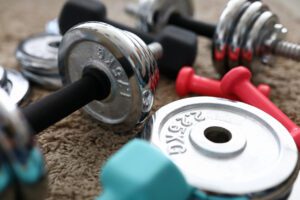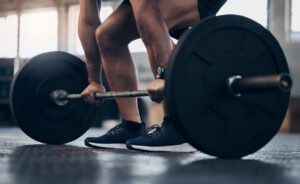The Science of Rest Periods for Strength Training
March 4, 2024Rest Periods For Strength Training
Including rest periods between your weight training sets is one of the training variables you must change to trigger physiological change within your body.
Rest periods are crucial as some of the other training variables you need to manipulate to achieve your training goals.
The amount of weight the number of sets and repetitions is closely tied to your training goals and outcomes for your program. You should begin to view weight as intensity and sets/reps as volume. Together, we can manipulate those to tailor exactly what you are aiming for.
Rest Periods For Different Training Goals
If your goal is to increase strength, or increase power your program should include heavier weights, low repetitions, and a long rest period between your sets. Around 2-4 minutes of rest period for these training goals.
This is because when you do high intensity exercise, your body switches to energy systems to provide fuel for the working muscles, and this energy source becomes depleted quite quickly, and causes an increase in metabolites like lactate and hydrogen ions to build up. You know this feeling when you feel the intense burn in your muscles. During a workout, this feeling shows you are lacking the energy to continue, so rest is needed. The soreness after a workout is different to this. The rest period is designed to give the body time to get rid of these from the blood, and the muscles to replenish their fuel stores before the next set.
Over time, this allows the body to adapt to heavier loads. The longer rest period will also help your nervous system to recover from the set and maintain your power and technique.
If you shorten your rest period whilst undertaking power and strength training work, you may not be recovered for your next set. This may lead to less power gains and deteriorating technique, which in turn increases your risk of injury.
If your goal is to lose weight or improve muscular endurance you would generally undertake weight training using lighter weights and a higher number of repetitions such as 15-20.
With these training goals, your rest periods between sets should be shorter (30 – 60 seconds). By using a shorter rest period, you are not as recovered. What this does over time is improve your ability to clear lactate as it is formed, or that burning sensation. This only works with low to moderate weights because less energy is needed for those movements. This also improves your aerobic fitness, because one of lactate’s precursors can be moved into the aerobic energy pathway, during sub-maximal exercise and provides aerobic energy.

Furthermore, shorter rest periods help increase total calories expended, build muscle, and burn fat.
Another way we can manipulate the rest period, so you are not waiting around for minutes during your workout, is to do what we call non-competing supersets. This is achieved by undertaking two opposing exercises with a shorter rest period.
An example of this could be to perform a seated row for one set, and then superset with a chest press or bench press for the next. The exercises use opposing actions and allow the working muscles to recover.
If your workout has several exercises that you rotate through doing one set of each, it may employ this same strategy of non-competing supersets.
The rest periods you undertake will depend on what goals you have for your workout. So to make the most of your workout, request a consult with a KB Personal Trainer or Exercise Physiologist about what rest periods are best for your goals, and don’t limit the results of your workout!





